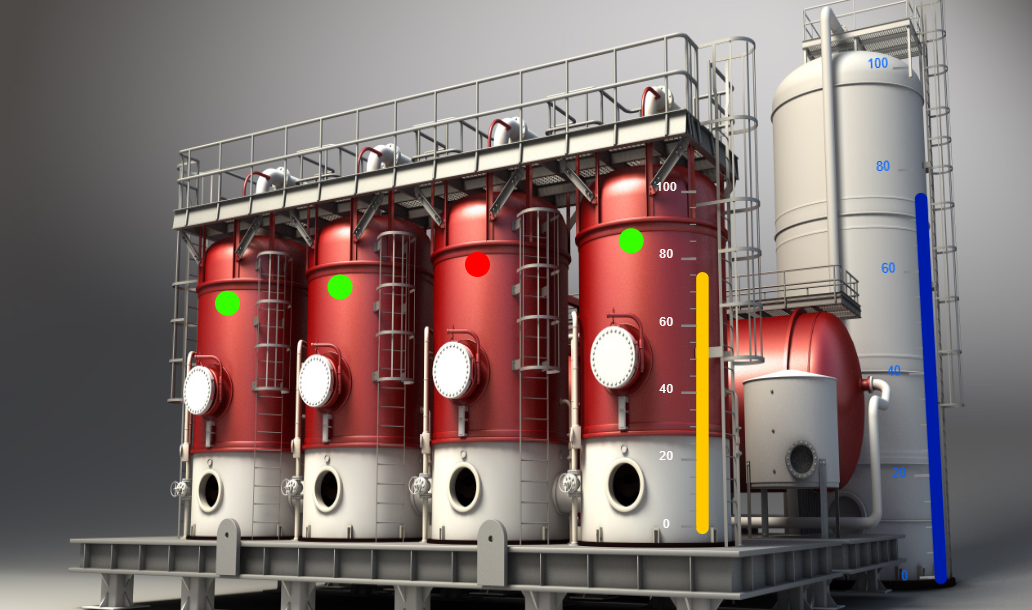What is the difference between Modbus and OPC?
Operational communication is software-to-software for operator display. Modbus/Profibus communication and other Data Connectors are hardware-to-hardware to control systems. OPC is a simple software tool that connects drivers with the other features of your infrastructure, like networks and device hardware. It can also help you connect with databases and application interfaces in HMI/process visualization software. Though these apps are quite different, they all use the OPC tool.
OPC:
OPC enables data transfer between different applications. It works especially well with programs relating to process control, advanced control and auto tuning. I would avoid OPC as it is not a good option for interlocks and closed loops. It can take a while to get the data and isn't always deterministic or in real-time. You could use Windows NT4/2000 and it often works here. The use of OPC servers and clients in Windows implementations has a bad track record. You don't have to limit yourself to OPC if you're using Windows. Despite the fact that Windows 95 and 98 tend to be more unstable than any other product ever made, Windows 2000 is really solid. I also can't complain about it in any way. You're even able to use Modbus/TCP between 2 Windows machines without a problem!" Sometimes, memory leaks happen because of bugs in the software. For example, a server crashes or client stops responding. and the program needs to be closed. If you're using other software programs such as Visual Basic, Excel or Access to coordinate with the controller, these programs are not immune from memory leaks. Question: "I'm having a problem that seems like a memory leak. Can you tell me how to fix it? “Answer: Computer memory issues can stem from many different causes, such as getting too much data, running out of swap space, or a software bug.
Modbus:
In this use case, the two most important things to look for when connecting a fieldbus are the physical characteristics of the bus (i.e., Modbus or PROFIBUS) and its topology. Companies implementing PLCs will usually have Profibus and Modbus protocols, while Siemens' protocol is called Profibus and Modicon's is Modbus. Both use RS-485 communications cables while Modbus can also be applied as an option with RS-232. While both the protocols (Profibus and Modbus) are master-slave, Profibus requires having a dedicated card in the interface while Modbus can work with converters or a PC serial port. Cyclic command loops are used for real-time input and output, where a single read or write command can be looped around to send and receive multiple commands at the same time. Non-cyclic is typically only used for configuration or diagnostic purposes.
Modbus has been around for a long time and it’s software-driven. It doesn’t need any cards or scanners to be working, which makes it a good alternative to protocols like Profibus. Many companies make their own Modbus drivers, but there are also plenty of people that create drivers for Profibus nowadays. However, this requires a card reader, a scanner software and configuration files. OPC is a software tool that converts tag names to either protocol addresses or scan IDs. For example, the tag name of HMI software could be converted into its scan ID. A good example of what this software can do is translation of barcodes into other information. It could tell you when they were last scanned, how long they have until they expire and more.
Modbus/TCP is appropriate for communication between controllers or in closed loops, but not so useful for communications where there are a lot of people involved. Modbus has a very simple design, because it lacks a logical object structure and standardized data types. The Modbus protocol breaks down data where possible to the lowest point of denominator. One of the benefits of Modbus is its flexibility. Unlike other industrial protocols, it doesn't require any predefined location. However, once implemented, it will require many users’ configuration attempts in order to plan registers Modbus and group them together into objects. This will help you identify what types of data each object contains). When breaking down any big problem it is unrealistic to expect that one can do it all on their own. With the vast amount of data available in today's systems, trying to cover everything is a losing battle.
You might also like



